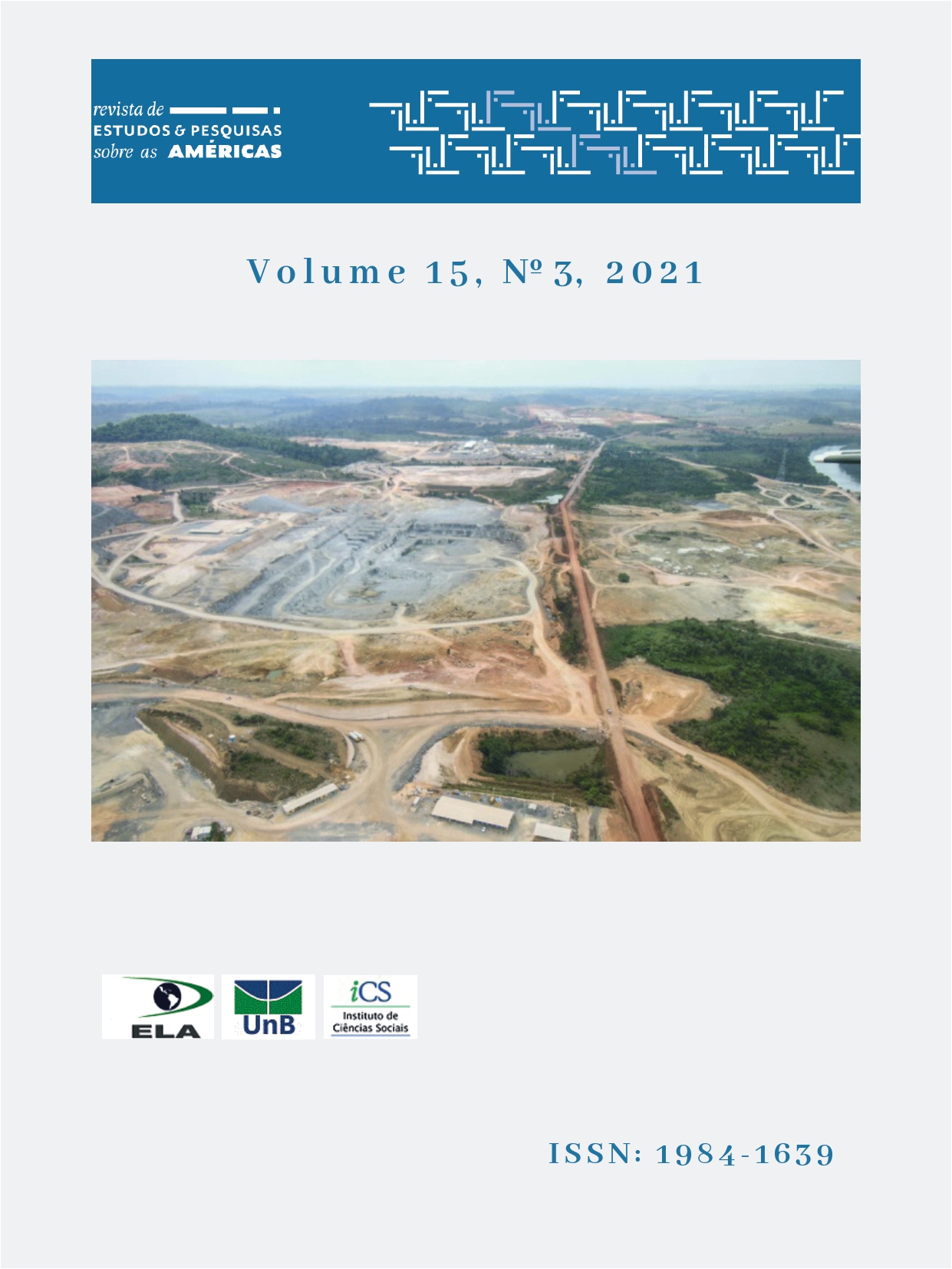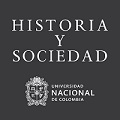Communication as the Centrality of Public Health and Energy Policies
Democratic and citizen reflections on the Basic Environmental Plan of the Usina Hidrelétrica de Estreito
DOI:
https://doi.org/10.21057/10.21057/repamv15n3.2021.40413Keywords:
Basic Environmental Plan, Health, Communication, CitizenshipAbstract
In view of the environmental impacts in the health area, caused as a result of the installation of powerplant, such as the proliferation of endemic diseases, such as malaria, dengue, yellow fever, cholera, leishmaniasis and infectious-contagious-parasitic diseases, such as Sexually Transmitted Infections (STIs ), this article analyzes the Basic Environmental Plan (PBA) of the Usina Hidrelétrica de Estreito, located in the states of Maranhão and Tocantins. The PBA is a set of programs aimed at mitigating social and environmental impacts, a condition for issuing the Preliminary License. Based on the methodological approach of Content Analysis (BARDIN, 2016), the 35 PBA Programs were investigated under a communicational perspective. It contemplates a qualitative analysis of five programs that address health impacts as central. As a result, it is observed that a more instrumental than a procedural perspective of communication is adopted. The programs establish communication and environmental education actions as proposals to mitigate impacts and link the reduction of environmental and social damage to the effectiveness of the actions. From authors such as Fearnside (2015); Nielsen (2001); Stevanin and Murtinho (2021) and Vainer (2007), reflect on the inseparability between health, communication and citizenship, in addition to the need for greater participation of social actors and a systemic perception of processes relevant to Environmental Licensing.
Downloads
References
AGENDA 2030. Transformando Nosso Mundo: A Agenda 2030 para o Desenvolvimento Sustentável, 2015. Disponível em: <http://www.itamaraty.gov.br/images/ed_desenvsust/Agenda2030-completo-site.pdf>. Acesso em 20 de maio de 2021.
ALMEIDA, G. R. Terras indígenas e o Licenciamento ambiental da UHE Estreito: uma análise etnográfica de um conflito socioambiental. Dissertação do Programa de Antropologia Social da Universidade de Brasília UNB, 2007.
AROUCA, Sérgio. Pronunciamento durante a 8ª Conferência Nacional em Saúde. Brasília, 1986. Disponível em : <https://portal.fiocruz.br/video/democracia-e-saude>. Acesso em: 02 jul. 20121
BANCO MUNDIAL - Licenciamento Ambiental de Empreendimentos Hidrelétricos no Brasil: Uma Contribuição para o Debate. Volume II: Relatório Principal, 2008.
BARDIN, Laurence. Análise de Conteúdo. São Paulo: Edições 70. 2016.
BESSA, N. G. F. de.; PEREIRA, A. G.; ZITZKE, V. Aquino. “Foro de Negociação e Comitês de Cogestão em empreendimentos hidrelétricos no Brasil: uma análise sob a perspectiva da governança, do controle social e da participação cidadã”. Sustentabilidade em Debate, Brasília, v. 2, n. 2, p. 115-134, jul/dez, 2011.
BRAGA, J. L. Comunicação gerativa: um diálogo com Oliver Sacks. Matrizes. São Paulo, v.11, nº 2, p. 35-55, maio-ago/2017.
CNEC Engenharia S. A. Estudo de Impacto Ambiental e Relatório de Impacto Ambiental – EIA/RIMA da Usina Hidrelétrica de Estreito. São Paulo, 2001.
CNEC Engenharia S.A. Programa Básico Ambiental da Usina Hidrelétrica de Estreito. São Paulo, 2005.
COUTINHO, C.N. Contra a Corrente: ensaios sobre a democracia e socialismo. 2. Ed. São Paulo: Cortez, 2008.
FEARNSIDE, Philip M. Hidrelétricas na Amazônia: impactos ambientais e sociais na tomada de decisões sobre grandes obras / Philip M. Fearnside. - Manaus: Editora do INPA, 2015. v. 2
FISKE, J. Introduction to communication studies. 2. ed. New York: Routledge,1990.
FUCHS, Christian. “Mídias sociais e a esfera pública”. Revista Contracampo, v. 34, n. 3, ed. dez/2015-mar/2016. Niterói: Contracampo, 2015.
HABERMAS, Jürgen (1981). Teoría de la acción comunicativa: crítica de la razón funcionalista (V. II). Madrid: Taurus, 1987. Trad. Inglesa: The theory of communicative action: lifeworld and system, a critique of funcionalist reason (V. II). Boston: Beacon Press, 1989.
HABERMAS, Jürgen. The Structural Transformation of the Public Sphere. An Inquiry into a Category of Bourgeois Society. Cambridge, MA: MIT Press, 1991.
MARTINO, Luiz C. “A ilusão Teórica no Campo da Comunicação”. Revista FAMECOS, Porto Alegre, nº 36, agosto de 2008b, quadrimestral.
MARTINO, Luiz C. “De qual comunicação estamos falando?” In: HOHLFELDT, Antonio; MARTINO, Luiz C; FRANÇA, Vera Veiga (Org.). Teorias da comunicação: conceitos escolas e tendências. 8. Ed. Petrópolis – RJ: Vozes, 2008a.
MIÈGE, B. O pensamento comunicacional. Petrópolis: Vozes, 2000.
MINISTÉRIO PÚBLICO FEDERAL/TO. Ribeirinhos querem foro permanente de discussão sobre usina hidrelétrica de Estreito. Disponível em <http://noticias.pgr.mpf.gov.br/noticias- do-site/meio-ambiente-e-patrimonio-cultural>, acesso em 21 dez. 2018.
NIELSEN, N. Ole. “Ecosystem approaches to human health”. Cad. Saúde Pública, Rio de Janeiro, 17(Suplemento): 69-75, 2001. Disponível em <https://www.scielo.br/j/csp/a/CpWLm9YmmnnHMZmYkkTR9cD/?lang=en&format=pdf>. Acesso em: 15 mai. 2021.
ONU. Declaração do Rio sobre Meio Ambiente e Desenvolvimento. Rio de Janeiro, 1992. Disponível em <http://www.onu.org.br/rio20/img/2012/01/rio92.pdf>. Acesso em 11 abr. 2020.
SIGNATES, L. A cidadania como comunicação: estudo sobre a especificidade comunicacional do conceito de cidadania. In: SIGNATES, L.; MORAES, A.T. (orgs.) Cidadania comunicacional: teoria, epistemologia e pesquisa. Goiânia: UFG, 2016.
SIGNATES, L. Epistemologia da Comunicação na Democracia: a centralidade do conceito de comunicação na análise dos processos políticos. Novos Olhares. São Paulo, v.1, n. 1, p. 7-18, 2012.
SIGNATES, L. Políticas públicas de comunicação: alguns referenciais teóricos e práticos de um problema mais amplo do que se pensa. XXVI Congresso Brasileiro de Ciências da Comunicação - INTERCOM, 2003.
STEVANIM, L.F. and MURTINHO, R. Direito à Comunicação e Saúde (on line). Rio de Janeiro: Editora FIOCRUZ, 2021.
VAINER, C. B. O conceito de Atingido: Uma revisão do debate e diretrizes. Rio de Janeiro, 2007. Disponível em <http://www.observabarragem.ippur.ufrj.br/publicações>. Acesso em: 02 mai. 2020.
------
Downloads
Published
How to Cite
Issue
Section
License
Copyright (c) 2022 Luiz Signates, Lígia Clemente

This work is licensed under a Creative Commons Attribution-NonCommercial 4.0 International License.
The published material is the property of the Journal, and may be reproduced in whole or in part with indication of the source.
Copyright: Authors will be responsible for obtaining the copyright of the material used. Authors who publish in this journal agree to the following terms:
a)Authors retain the copyright and grant the journal the right of first publication, with the work simultaneously licensed under
the Creative Commons Attribution License which allows the sharing of work with acknowledgment of authorship and initial publication in this journal.
b) Authors are authorized to take additional contracts separately, for non-exclusive distribution of the version of the work published in this journal (eg, publish in institutional repository or as a book chapter), with acknowledgment of authorship and initial publication in this journal.
c) Authors are allowed and encouraged to publish and distribute their work online (eg in institutional repositories or on their personal page) at any point before or during the editorial process, as this can generate productive changes as well as increase the impact and the citation of the published work (See The Effect of Free Access).
















